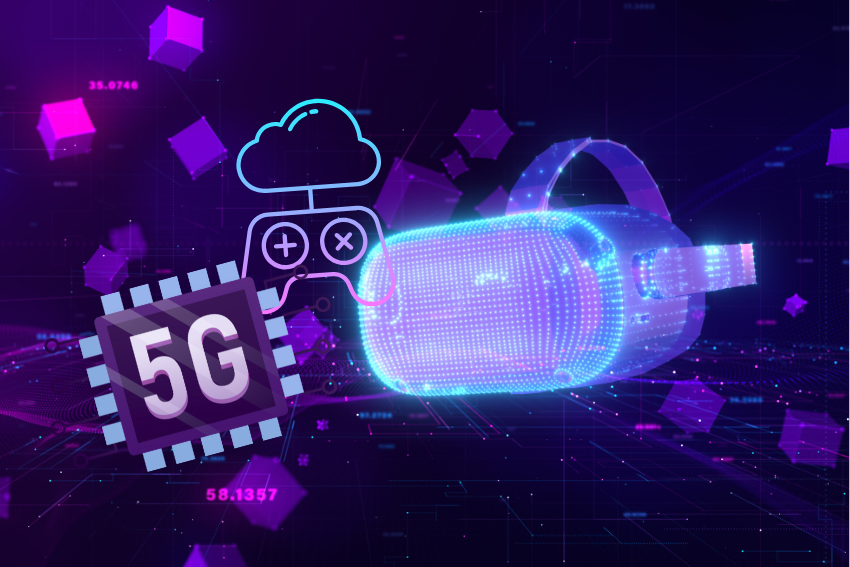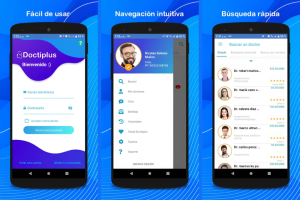5G represents a complete step forward in the way people and devices stay connected, with record-breaking speed and minimum delay, along with the ability to handle a lot more data. In industries rushing to exploit the benefits of 5G, gaming especially related to Virtual Reality (VR) and cloud gaming, is being hit the hardest.

Today, games are easy to play with fast, sharp graphics and mainly no wait times. 5G makes it possible today for games to be played online in ways that were simply not achievable with earlier networks. We cover in this article how 5G is reshaping VR and cloud gaming, the challenges it helps overcome, its real-world applications and what to expect in the future from these technologies.
What is 5G?
Essentially, 5G is the newest generation of mobile networks. It is much quicker than 4G. Truly, very quickly. With 5G, the speed you get can be up to 100 times faster than what you find with 4G. But speed isn’t the only big thing here.
Here are the major things 5G brings:
- With speeds exceeding 10 Gbps, it’s up to 100 times faster than 4G.
- A latency rate of 1 millisecond is available, supporting instant responses.
- Increased bandwidth, giving users the ability to link more gadgets at the same time without quality decrease.
- Improved consistency and dependability that result in better and more precise data transmission.
Look at 5G as an express route full of a larger number of lanes, faster cars and no traffic jams.
Understanding VR and Cloud Gaming
It’s important to talk about what exactly VR and cloud gaming are before moving on.
What is VR?
When using Virtual Reality for gaming, people are led into a world computer-generated around them, usually by relying on VR headsets and motion-sensing controller devices. VR uses recent data calculations and low-delay results to create an exciting and comfortable virtual world for users.
What is Cloud Gaming?
Cloud gaming works by streamlining games from the internet, so you don’t have to install them on your own computer. The model functions optimally if the player has a secure and fast internet connection, because the game takes place in the cloud and is sent immediately to the player’s device.
Why These Technologies Need 5G
Using VR and cloud gaming puts a big load on bandwidth and makes them dependent on low latency. A short amount of delay can result in nausea for some and stop others from playing hardcore cloud games. It’s in this situation that 5G can help.
The Key Role of 5G in VR Gaming
Ultra-Low Latency
With VR, a slow response can quickly break the feeling of being in the virtual world. Because 5G has such fast reaction times, less than 10 ms, VR becomes more fun and realistic.
High Data Throughput
Because VR uses a lot of data for high-definition graphics and sound, slightly over a gigabyte per minute, 5G creates the necessary conditions for fast, lag-free play.
Mobile and Wireless Freedom
Before, virtual reality systems relied on cables and powerful computers. VR is now able to be applied on mobile platforms with 5G technology. Users can use standalone headsets for VR, enjoying unconnected play on high-quality content delivered over the network, eliminating the need for connecting hardware accessories.
Edge Computing Integration
In 5G, data is commonly processed on MEC devices near the user. Being so close to each other means lesser latency which supports the use of VR applications that require high performance.
Also Read – Top VR Apps for iOS in The World of Virtual Reality
How 5G Enhances Cloud Gaming
Instant Play and No Downloads
Because cloud gaming doesn’t require big downloads or updates, it lets you start playing right away. And with 5G, the highest graphics in a game stream just like watching a movie on Netflix.
High Resolution, No Compromise
Most gamers dream about enjoying games at 4K resolution with a fast frame rate. Because of 5G’s higher bandwidth, it’s easy to play great games without buying expensive equipment.
Cross-Platform Capability
Because of 5G and cloud gaming, players can use top-grade gaming on any device—be it a smartphone, tablet, TV or basic computer. It allows more people to play expensive games than before.
Scalability and Accessibility
Game developers and platforms can scale faster, reaching more players without the constraints of physical hardware. 5G allows more simultaneous connections and seamless scalability for multiplayer cloud gaming platforms.
Real-World Examples and Applications
Nvidia GeForce Now and 5G
GeForce Now from Nvidia is teaming up with telecom operators to improve gaming on 5G. Testers found that playing mobile games became noticeably smoother and with lower lag on 5G.
Oculus Quest and 5G Wi-Fi
Although the Oculus Quest headsets mainly use Wi-Fi, Meta is now adding 5G hotspots to them so users can go VR while on the move. On account of portable 5G routers, users can explore unfamiliar spots in virtual worlds.
Microsoft xCloud
5G is helping Microsoft’s xCloud make significant progress too. Users can experience console quality games on their phones by relying more on the Xbox rather than their own phone’s hardware.
5G-Powered VR Arcades
People who want to enjoy big VR games with friends now have a good option other than setting up high-powered VR rigs. Because these arcades are driven by 5G and edge computing, setting them up is both easy and inexpensive.
The Technical Architecture Behind It
Network Slicing
With 5G, it becomes possible for operators to use network slicing to deliver custom virtual networks for chosen applications. You can choose a slice that suits gaming or VR to receive ensured bandwidth and low delay.
Massive MIMO and Beamforming
These technologies increase the capacity and efficiency of 5G networks, ensuring stable connections even in crowded areas—critical for multiplayer gaming and VR environments where packet loss can be disastrous.
mmWave Spectrum
Although it only covers a short distance, mmWave offers the best bandwidth for big cities and VR events. When used with small cells, it provides the high-speed performance needed by VR and cloud gaming.
Why Does It Matter?
It’s common to ask: “Why is this a major concern?” Here’s why:
- Everyone Can Play: Not all people can afford a $2000 gaming PC. With 5G, you can enjoy popular games on just about any phone or tablet without any trouble. It makes things equal for everyone involved.
- New Kinds of Games: Because networks are faster, developers can now build games that were previously beyond their abilities. Conceivably, VR users all around could attend and compete in dance battles during a combined concert. Or a game hosted online where the world changes while you explore.
- More Freedom: You won’t see any wires. You don’t have to download large files. You don’t need fancy gadgets to join. Just get it out to play wherever and whenever you want to.
The Challenges Ahead
Of course, there are still a few problems with 5G technology.
- Infrastructure Gaps: Although 5G is widely accessible, there are many locations where it doesn’t yet reach. When 5G fully realizes its value for gaming, it will need to be deployed across many areas.
- Device Compatibility: Device compatibility is not yet available for all products. Enjoying everything a new game offers may mean you have to buy or upgrade your computer equipment.
- Data Consumption: Streaming games in high resolution over 5G can consume massive amounts of data, potentially leading to high costs unless unlimited data plans become the norm.
- Security and Privacy: As games and related data are switched to the cloud and wireless systems, concerns about data protection increase. Making data transmission safe and protecting user privacy should take top priority.
What’s Next for 5G Gaming?
The next era appears to be promising. This is what we could be experiencing in the near future:
- Metaverse and Mixed Reality: Metaverse and Mixed reality are made possible by 5G as it builds a path for people to join the real world with the digital one. This whole vision is based on cloud gaming and VR, where 5G plays the connecting role.
- AI-Driven Experiences: The use of 5G allows AI to help make gaming experiences even better, from improving the behavior of non-player characters to changing the story as you go. Because of this, games can adapt more to each player’s preferences.
- Haptic Feedback and Sensory Immersion: Future 5G games will let players feel more by including haptic suits along with devices that create special sensations like touch, warmth and even smells.
- Global Esports Evolution: As latency gets solved, more countries will take part in esports and it will become more inclusive. Players worldwide will be able to play on the same level which should make the competition even.
Final Thoughts
5G isn’t like a minor upgrade. It’s a big step forward. VR and cloud gaming are greatly transformed by this new technology. It makes sites responsive, reduces connection problems and benefits all users.
The gaming world is getting more accessible. More flexible. More fun. You don’t have to be wealthy or know lots of technology. A device and the desire to play are all you need with 5G.
With 5G, games in virtual reality or on the cloud are always enjoyable, fast and free from lag.


